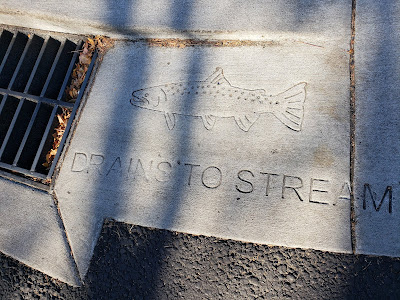Prevent Storm Water Pollution
Storm water is water and snow melt that does not soak into
the ground. Storm water eventually runs off into the waterways. The flowing
water picks up pollution off rooftops, paved areas and lawns. Pollution can include
pesticides, fertilizers, motor oil, sediment, litter, and animal waste to name
a few.
The Problem
Storm water and ditches drain into streams and rivers
carrying the pollutants with it. Storm water polluted with fertilizers and
excessive nitrogen damage the quality of rivers, lakes, and wetlands by
introducing excessive nitrogen, which promotes algae overgrown and depletes
oxygen. Pesticides, herbicides, and automotive toxins harm water quality and
aquatic life. Additionally, animal waste has bacteria that when washed into the
storm water can make rivers and lakes unsafe for swimming and fish consumption.
The Solution
- When possible, buy household products labeled “nontoxic”.
- Clean water-based paints in sinks that go to the sewer system. For oil-based paints that do not rinse down the sink, use paint thinner to remove paint.
- Take leftover or used automotive fluids to a hazardous waste collection. Use absorbent materials (i.e. kitty litter) to clean up automotive fluid leaks and spills
- Swimming pool and spa water should be drained into the sewer system. Chlorine is harmful to aquatic life and should not be put into the storm water system.
- When using pesticides and fertilizers, do not apply before a rain and do not over water after application.
- Pick up pet waste as soon as possible
- Remove leaves and tree debris from storm drains.
Be part of the solution and not part of the problem!
Do your part to keep our waterways clean and clear of pollution!




Comments
Post a Comment